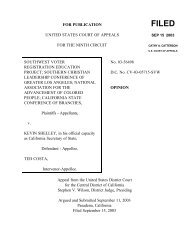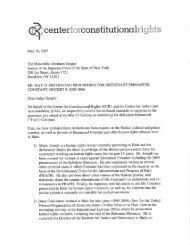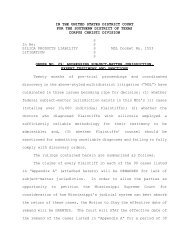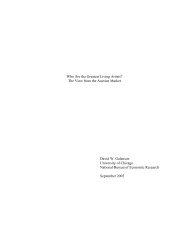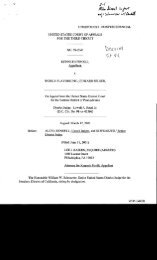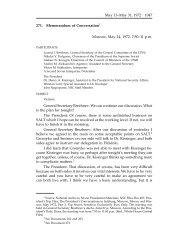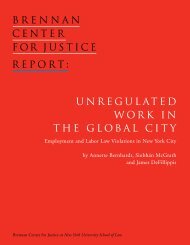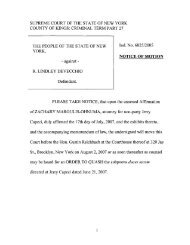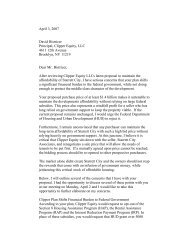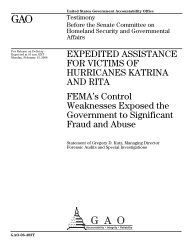UNITED STATES DISTRICT COURT SOUTHERN DISTRICT OF ...
UNITED STATES DISTRICT COURT SOUTHERN DISTRICT OF ...
UNITED STATES DISTRICT COURT SOUTHERN DISTRICT OF ...
Create successful ePaper yourself
Turn your PDF publications into a flip-book with our unique Google optimized e-Paper software.
Case 1:08-cv-07837-PAC Document 51 Filed 10/31/2008 Page 23 of 26<br />
Cent. Valley Chrysler-Jeep, Inc. v. Goldstene, 529 F. Supp. 2d 1151, 1156 (E.D. Cal. 2007).<br />
Part of the EPA’s mandate under the CAA is to set standards relating to emissions from new<br />
vehicles. 42 U.S.C. § 7521(a)(1). The CAA also contains a preemption provision at § 209(a):<br />
42 U.S.C. § 7543(a).<br />
No State or any political subdivision thereof shall adopt or attempt to<br />
enforce any standard relating to the control of emissions from new motor<br />
vehicles or new motor vehicle engines . . . No State shall require<br />
certification, inspection, or any other approval relating to the control of<br />
emissions from any new motor vehicle or new motor vehicle engine as<br />
condition precedent to the initial retail sale, titling . . . or registration of<br />
such motor vehicle, motor vehicle engine, or equipment.<br />
While the CAA only relates to the regulation of vehicle and engine emissions, Plaintiffs<br />
argue that the TLC 25/30 Rules—which govern fuel economy—are a de facto regulation of<br />
emissions and that the purpose of the rules is to regulate emissions. (See Saylor Decl. Ex. A ¶¶<br />
100-02.) The issue here is whether Plaintiffs have a likelihood of success in demonstrating that<br />
TLC regulations imposing fuel economy standards are preempted by the CAA when the<br />
regulations at issue do not mention or target emissions.<br />
1. Relevant Case Law<br />
A state or municipal law that clearly targets emissions in new vehicles is generally<br />
preempted under the CAA. For instance, courts have held that § 209(a) preempts states from<br />
requiring that a percentage of new vehicles certified for sale in that state be “zero emissions<br />
vehicles” (“ZEVs”). See Am. Auto. Mfrs. Ass’n v. Cahill, 152 F.3d 196, 200 (2d Cir. 1998)<br />
(finding that while the New York law did not “impose precise quantitative limits on levels of<br />
emissions,” the ZEV sales requirement nevertheless “must be considered a standard ‘relating to<br />
the control of emissions’” because the law had no purpose other than to effect a general<br />
23



